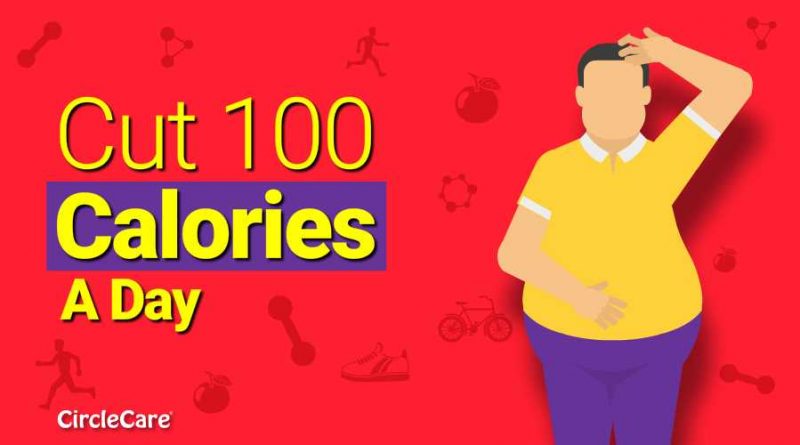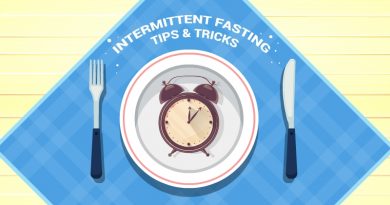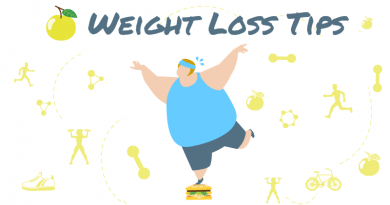When dieting there are several things to keep in mind, from how often you’re eating down to the distribution of macro-nutrients in your food. Basically what you’re trying to achieve is consume fewer calories than you are spending. That’s it!
But does that mean that you can just stop eating aggressively all of a sudden, and expect to lose weight overnight? No. Actually, according to CDC healthy rate of losing weight is between 1 to 2 pounds per week.
Let’s look at calorie consumption and fat burning in relation to each other, there are 3500 calories in 1 pound. So, to lose 1 pound a week, you’ll need to achieve at least a 3500 calorie deficit between your consumption and calorie burn. You can achieve this deficit not only through diet but also through exercise. Exercising can be a sure fire way to burn some extra calories and gain muscle strength.

Corporate Wellness App
CircleCare
Burn more calories than you consume
It means that no matter how hard you exercise, if you’re eating more calories than you’re burning you’ll never lose weight. It’s also important to remember that changes to diet need to be made slowly over time. You can not just randomly start to cut out meals just to meet your target calorie deficit. Any sudden changes to the regular diet might not work out well: It might throw your metabolism out of whack; as a result, the body will protect itself by slowing down the rate of metabolism. So if you drop your calorie intake too aggressively it will hold onto whatever sugars and fats you do eat to prepare for the next famine.
Start by reducing your calorie intake gradually. According to the experts, healthy rate for dropping your calories is from 100-500 calories per day. Here a few tips to help get you started!
Replacing Familiar Foods With Lower Calorie Alternatives
Two large eggs scrambled with a half-cup of spinach comes in at 150 calories, a significant drop from the 290 calories you’ll find in a Dunkin’ Donuts Bacon, Egg, and Cheese English muffin sandwich. What about that delicious bacon or cheeseburger? Replace it with chicken or turkey alternative and you shave off almost 300 calories!
Veggies Masquerading As Starches
Comfort foods are, perhaps, some of the most difficult to give up. Swapping in vegetables and preparing them in a way that mimic your favorite dishes is a huge calorie saver. Zoodles (zucchini noodles) replaces pasta. They don’t have a strong flavor so they go great with any kind of sauce as well. Cauliflower does a tremendous job playing the part of the mashed potato and you prepare it the same way! Boil, mash, season, and serve. And the best part? These little tricks can save you approximately 200 calories each meal!
Low or Negative Calorie Foods
Yes, you read that correctly. There are foods that take more energy to process them, than the calories they provide. If you wanna create calorie deficit, choose any of the items from this list below to your daily snack and start burning away at those calories!
- Celery
- Cucumbers
- Strawberries
- Arugula
- Asparagus
- Broccoli
- Apples
- Lettuce
- Tomatoes
- Watermelon
Pre-measured Portions
How often do you eat a snack straight from the bag? It can be really difficult to keep track of your calorie intake if you are eating directly from the box. The best thing to do is to portion out your snacks for the week ahead of time. In order to ensure that you don’t overeat, keep your snacks in single serving sizes in its own containers.
Play Mind Games
Lacking motivation to stay on your diet? You can try playing some mind games, to strengthen your willpower and trick your brain to stay on track. Here are 10 research-backed ways to trick your brain into thinking that you are feeling fuller:
- Use smaller plates/bowls: This has been proven over and over again that using smaller plates leads to smaller portion of food each meal. It is the size of the place that can trick your brain into believing whether you are eating a full plate or half plate of food.
- Food color matters: Many diet plan suggest that eating from a blue plate or eating under blue light or even dying your food with blue color suppresses your appetite. Another group of dietitian suggests that if the color of the food served and the actual ingredients used in it are similar, they will eat more.
- Drink water from short glasses: Drinking water has considerable impact on weight loss. If you swap your tall and narrow glass with a short and fat one, you’re more likely to pour larger amounts of water into a short glass as opposed to a tall one. The more water you drink the more feeling of fullness you will get, which will reduce your appetite before your meal.
- Cut your food into smaller bites: People who cut up their food into smaller portions and higher number of bites, burn more calories because of extra chewing and slow pace of eating.
There you have it! Most of the suggestions on this list are very simple to include in your daily routine. A swap of an ingredient here, a smaller plate there…you’ll be sure to shave off at least 100 calories, if not more, every day!








